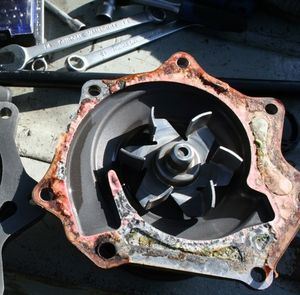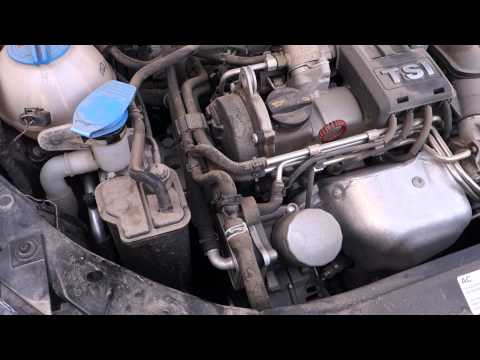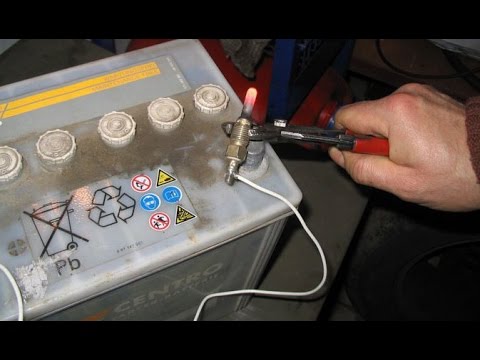
pump failure
pump failure are manifested in a significant play of its shaft, a violation of the tightness of the seal, wear (corrosion or fracture) of the impeller. All of these defects lead to the fact that the car's water pump does not work properly, due to which the required pressure is not maintained in the internal combustion engine cooling system, which, in turn, leads to an increase in the temperature of the coolant until it boils. You have to buy a new pump and install it instead of the old one.
Signs of a pump breakdown
There are only six basic signs of a “dying” pump, by which it can be judged that the pump is partially (and even completely) out of order and must be replaced. So, these symptoms include:
- Extraneous noise. Often, a partially faulty water pump in the cooling system makes “unhealthy” noisy or “howling” sounds during operation. They can be caused by severe wear on the bearing and/or the fact that the pump impeller touches the pump housing as it rotates. This also appears due to a partial failure of the bearing.
- Pump pulley play. It appears due to damage or natural wear of its rotation bearing. Diagnostics in this case can be carried out quite simply, just shake the pump shaft from side to side with your fingers. If there is a backlash, then it will feel good tactilely. Please note that the formation of backlash brings the moment when the pump seal will be leaky and will let coolant through.
- The appearance of a leak. So, antifreeze can leak both from the seal and from other places, for example, the housing and the impeller. Antifreeze or antifreeze in this case can be seen on the pump body, the place of its attachment, some elements of the engine compartment under the pump (depending on the design of a particular car) or simply on the ground under the car.
- Antifreeze odor. namely, it can be felt not only in the engine compartment (when the hood is opened), but also in the cabin, since its fumes will enter the cabin through the ventilation system. Antifreeze has a sweet smell, sometimes with a taste of alcohol.
- Mounting misalignment. namely, in relation to the timing gears, as well as the tension rollers. This can be seen visually, or by placing some flat object (for example, a ruler) in the same plane as the rollers and pump. In this case, a situation often appears when the belt eats up.
- Significant increase in internal combustion engine temperature. And not only the internal combustion engine, but also the coolant, as indicated by the warning light on the dashboard. In critical cases, a banal boiling of antifreeze appears, and steam will come out of the radiator. However, this is critical and if it occurs, it is forbidden to use the car!
If at least one of the above signs of a breakdown of the car's water pump appears, additional diagnostics should be made, both of the pump and of malfunctions of the cooling system. When the first signs of a dying pump appeared, you can also go, but for how long, it is not known, and it is better not to tempt fate. In some cases, the car can stretch 500 ... 1000 kilometers, while in others it will not travel even hundreds. Be that as it may, jokes are bad with the cooling system, and it is necessary to carry out its diagnostics and repairs on time and in full.
Depending on the brand and quality of the water pump of the cooling system, the regulations prescribe its replacement after about 60 thousand kilometers (it depends in each case, and is prescribed by the automaker, the corresponding information can be found in the manual).
Causes of pump failure
What are the possible causes of pump failure? This question is of interest not only to beginners, but also to fairly experienced motorists. the following are the main causes, from the most common and frequently occurring to the "exotic". Among them:
- Defective bearing. This assembly naturally wears out as it is used. However, accelerated wear is possible due to additional negative factors. Such, for example, is an incorrect (stronger) belt tension, due to which more force is exerted on the bearing. Another reason for significant wear is the ingress of antifreeze on rubbing pairs due to gasket depressurization and coolant smudges.
- Sealing failure... The pump has two seals - an oil seal and a rubber cuff. And it is the oil seal (gasket) that most often fails. This happens for two reasons - natural wear and tear (rubber tanning) and the use of low-quality cheap antifreeze without appropriate sparing additives, or even water at all. In the long term, these fluids "eat up" the gasket, it begins to leak, which leads, firstly, to a decrease in the level of coolant in the system, and secondly, to the ingress of antifreeze or water into the bearing, flushing out the lubricant and the troubles described above.
- Mounting misalignment. This is possible for two reasons - incorrect installation and factory defects. However, incorrect installation is a rather rare phenomenon, since there are ready-made mounting holes on the case, which are very difficult to miss. Another reason is an uneven fit to the engine block (due to dirty, rusty or warped mating surfaces). But, unfortunately, factory marriage, especially for budget pumps, is not such a rare phenomenon. Misalignment causes the pulley to rotate misaligned, which in turn leads to accelerated wear of the loaded part of the belt, as well as bearing wear. In the most critical cases, the belt may break and the valves and pistons may collide. Sometimes misalignment appears as a result of a car getting into an accident, as a result of which individual elements of the body and / or internal combustion engine were also removed.
Often, a decrease in pump performance, and, accordingly, a decrease in pressure in the cooling system is observed after applying the sealantused to fix radiator leaks. So, its composition mixes with the coolant and clogs the cells (channels) of the radiator, and also sticks to the pump impeller. If this situation happened, then you need to drain the antifreeze, dismantle the pump, and then flush the cooling system using special or improvised means.
How to identify a broken pump
Checking the water pump of the internal combustion engine of a car for a breakdown is quite simple. The easiest method is to try by touch if there is play or no play on the pump shaft. To do this, it is enough to take the pump shaft with your fingers and pull it from side to side in a direction perpendicular to the shaft itself (that is, across). If the bearing is in order, then there should be no play. If even a small play occurs, then the pump needs to be changed.
However, a more thorough check without removing the pump is performed according to the following algorithm:
- Warm up the engine to operating temperature. That is, in order for the coolant temperature to be around + 90 ° С.
- With the internal combustion engine running, pinch the thick pipe with coolant that comes from the radiator with your hand.
- If the pump is working, then pressure should be felt in it. If there is no pressure or it is pulsating, then this means that the pump is partially or completely out of order. Most likely the pump impeller turned.
also in order to check the pump, you need to visually inspect its seat. To do this, you need to dismantle the protective casing of the gas distribution mechanism in order to gain access specifically to the pump (for different cars, the design is different, therefore, it may not be the casing or it does not need to be dismantled). then carefully inspect the pump housing, its seal and seat.
Be sure to pay attention to the presence of smudges of antifreeze from under the sealing gasket. And, not necessarily, it should be wet at the time of checking. If the seat and seal are dry, but there are dried (and fresh) traces of smudges in the attachment area, this means that at high pressure the seal still passes coolant. Traces of smudges have a reddish or brownish-brown color, in some cases gray (this depends on what color the antifreeze was poured into the cooling system).
Before dismantling the pump for further diagnostics (checking the impeller and bearing), you need to make sure that the thermostat of the cooling system is working properly, and there is no air lock in the system itself. Otherwise, you need to troubleshoot the corresponding problems.
If the pump is dismantled, then it is imperative to inspect the condition of the impeller. namely, the integrity of the blades, as well as their shape.
you also need to inspect the place where the pump fits on the engine block. Ideally, there should be no coolant leaks from the drain hole. However, if there are minor (precisely minor !!!) smudges, then the pump can not be changed, but temporarily try to get rid of them by replacing the seal and using a sealant.
in order to check whether it is the pump bearing that makes the corresponding noise and whistle, it is enough to remove the belt from the pump pulley and unwind it by hand, preferably as quickly as possible.
If the bearing is faulty, it will emit a hum, and roll with a noticeable rumble and unevenly. However, this method is suitable for those pumps whose pulley rotates with a drive belt. If it rotates with a timing belt, then for diagnostics it will be necessary to weaken its force and check its operation in such conditions.

How does a faulty pump make noise?
Many motorists are interested in the question of whether to repair the old pump, or to change, buy and install a new pump. There can be no specific answer in this case, and it depends on the condition of the pump, its wear, quality, brand, price. However, as practice shows, repair is possible only when replacing the rubber gasket. In other cases, it is better to replace the pump with a new one, especially if it has been used for a long time. When replacing the pump, the antifreeze also changes.
